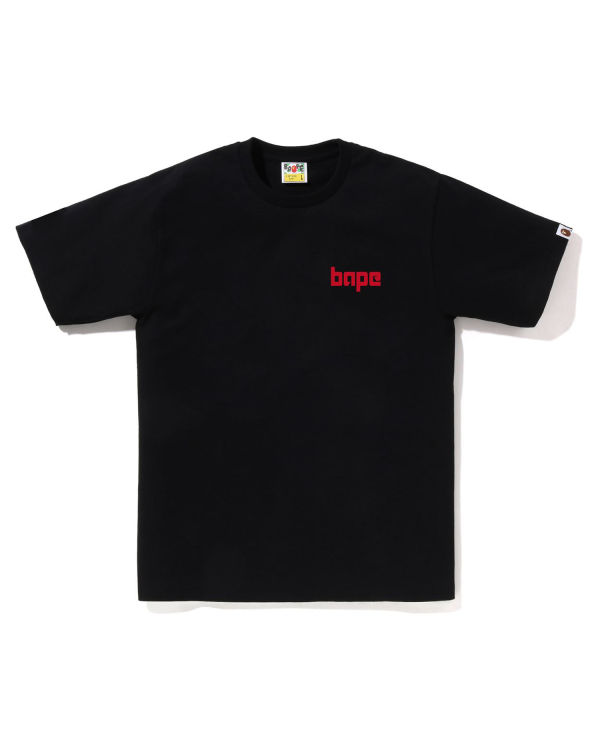
In the world of fashion, branding plays a crucial role in creating a distinctive identity and establishing a connection with consumers. However, few brands have been able to revolutionize the concept of branding quite like Bape (A Bathing Ape). Known for its iconic logos and bold designs, Bape has redefined the way brands approach branding in the fashion industry. Bape shirts, in particular, have become a symbol of this branding revolution, capturing the attention of fashion enthusiasts and celebrities worldwide. In this article, we will explore how Bape shirts have changed the game when it comes to branding, examining the brand’s history, its logo and visual identity, its collaborations, and its impact on the fashion industry.
To understand the impact of Bape shirts on branding, it is essential to delve into the brand’s history and its unique approach to visual identity. Bape was founded in 1993 by Tomoaki Nagao, known as Nigo, with the goal of creating a brand that stood out from the crowd. Nigo’s passion for streetwear and pop culture led him to develop a logo that would become instantly recognizable and synonymous with the brand. The iconic Bape Ape Head logo, inspired by the Planet of the Apes franchise, became the cornerstone of Bape’s visual identity.
The Bape Ape Head logo revolutionized branding by taking a simple, memorable graphic and placing it at the forefront of the brand’s identity. Unlike traditional logos that rely on intricate typography or complex symbols, the Bape Ape Head logo utilized a minimalistic approach, featuring a stylized ape face in a circle. This simplicity allowed the logo to be easily recognizable from a distance and across different mediums, from clothing to accessories and beyond. The logo became a visual shorthand for the brand, evoking a sense of exclusivity and cultural relevance.
Bape’s approach to branding extended beyond its logo and visual identity. The brand’s collaborations played a significant role in its branding revolution. Bape has partnered with a wide range of brands, from luxury fashion houses like Comme des Garçons and Fendi to popular franchises like Star Wars and Pokemon. These collaborations not only brought together different aesthetics and brand identities but also created a sense of exclusivity and desirability. Bape collaborated with brands and artists that were typically beyond the reach of streetwear, elevating its status and expanding its appeal to a broader audience.
Furthermore, Bape’s ability to create hype and scarcity around its products has been instrumental in its branding revolution. Limited-edition releases and exclusive drops became a signature strategy for the brand, generating an air of anticipation and excitement among consumers. Bape’s ability to create a sense of urgency and desirability for its shirts through limited availability and limited-time collaborations revolutionized the way brands approach product launches. By placing an emphasis on scarcity and exclusivity, Bape created a cult-like following and established its shirts as highly coveted items.
Additionally, Bape’s impact on branding can be seen in its influence on the broader fashion industry. The brand’s ability to seamlessly blend high fashion and streetwear created a new paradigm for branding. Bape’s collaborations with luxury fashion houses, such as its collaboration with Louis Vuitton, challenged the traditional notion of exclusivity and accessibility. The merging of these seemingly disparate worlds shattered preconceived notions and opened the door for other brands to experiment with unconventional partnerships and brand collaborations. Bape’s success in this realm paved the way for a new era of brand collaborations, forever changing the landscape of fashion branding.
Moreover, Bape’s branding revolution can be attributed to its ability to create a sense of community and cultural significance through its shirts. Bape shirts have become more than just clothing; they have become symbols of belonging and identification. By wearing a Bape shirt, individuals align themselves with a particular subculture and community, sharing a common language and appreciation for the brand’s aesthetics and cultural references. Bape has created a distinct lifestyle and identity around its brand, fostering a sense of inclusivity that goes beyond traditional branding strategies.
In conclusion, Bape shirts have revolutionized the concept of branding in the fashion industry. Through its iconic logos, unique visual identity, collaborations, and ability to create hype and exclusivity, Bape has transformed the way brands approach branding. The brand’s ability to seamlessly blend luxury fashion with streetwear, its collaborations with diverse brands and artists, and its creation of a community and cultural significance have solidified Bape as a trailblazer in the world of branding. As the fashion industry continues to evolve, Bape shirts will undoubtedly remain at the forefront of this branding revolution, inspiring other brands to push boundaries and redefine the way they connect with consumers.